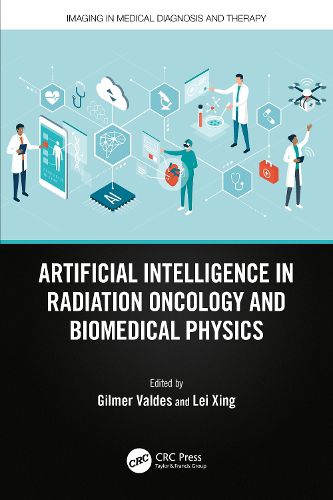Readings Newsletter
Become a Readings Member to make your shopping experience even easier.
Sign in or sign up for free!
You’re not far away from qualifying for FREE standard shipping within Australia
You’ve qualified for FREE standard shipping within Australia
The cart is loading…






This pioneering book explores how machine learning and other AI techniques impact millions of cancer patients who benefit from ionizing radiation. It features contributions from global researchers and clinicians, focusing on the clinical applications of machine learning for medical physics.
AI and machine learning have attracted much recent attention and are being increasingly adopted in medicine, with many clinical components and commercial software including aspects of machine learning integration. General principles and important techniques in machine learning are introduced, followed by discussion of clinical applications, particularly in radiomics, outcome prediction, registration and segmentation, treatment planning, quality assurance, image processing, and clinical decision-making. Finally, a futuristic look at the role of AI in radiation oncology is provided.
This book brings medical physicists and radiation oncologists up to date with the most novel applications of machine learning to medical physics. Practitioners will appreciate the insightful discussions and detailed descriptions in each chapter. Its emphasis on clinical applications reaches a wide audience within the medical physics profession.
$9.00 standard shipping within Australia
FREE standard shipping within Australia for orders over $100.00
Express & International shipping calculated at checkout
This pioneering book explores how machine learning and other AI techniques impact millions of cancer patients who benefit from ionizing radiation. It features contributions from global researchers and clinicians, focusing on the clinical applications of machine learning for medical physics.
AI and machine learning have attracted much recent attention and are being increasingly adopted in medicine, with many clinical components and commercial software including aspects of machine learning integration. General principles and important techniques in machine learning are introduced, followed by discussion of clinical applications, particularly in radiomics, outcome prediction, registration and segmentation, treatment planning, quality assurance, image processing, and clinical decision-making. Finally, a futuristic look at the role of AI in radiation oncology is provided.
This book brings medical physicists and radiation oncologists up to date with the most novel applications of machine learning to medical physics. Practitioners will appreciate the insightful discussions and detailed descriptions in each chapter. Its emphasis on clinical applications reaches a wide audience within the medical physics profession.